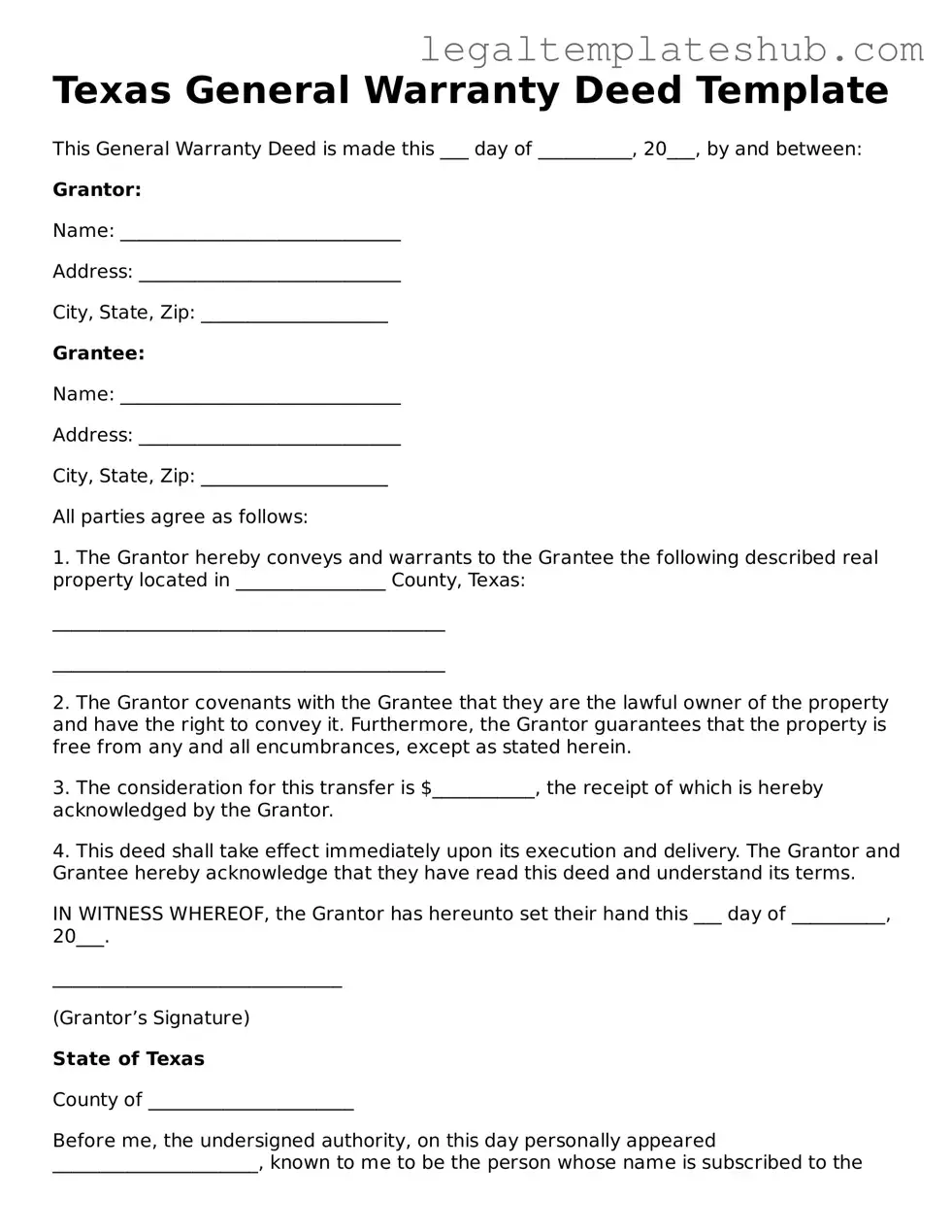Printable Deed Document for Texas
A Texas Deed form is a legal document used to transfer ownership of real property in the state of Texas. This form outlines the details of the transaction, including the parties involved and the property being conveyed. To ensure a smooth transfer of property rights, it is essential to fill out the form accurately.
To get started on your Texas Deed form, click the button below.
Access Editor
